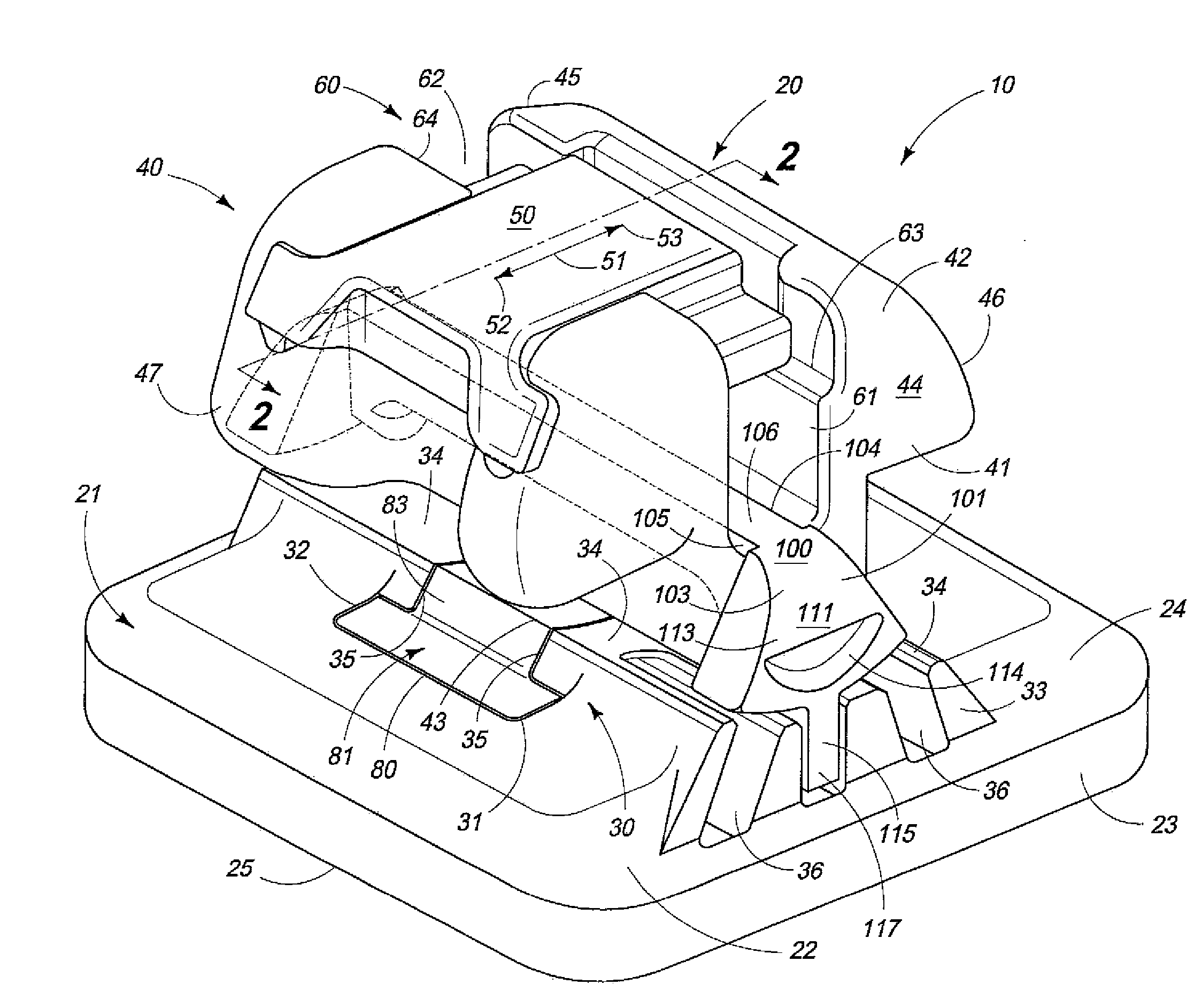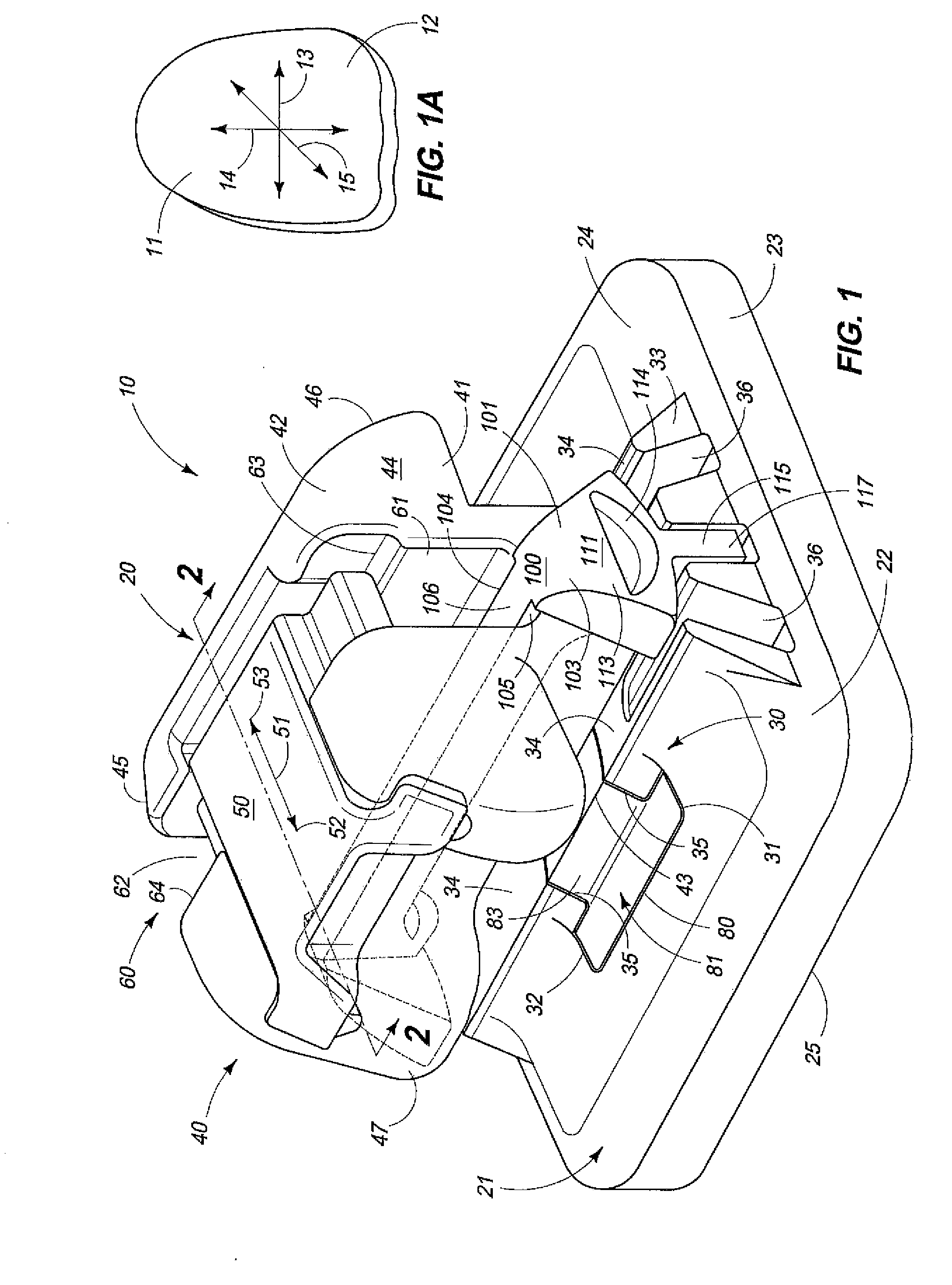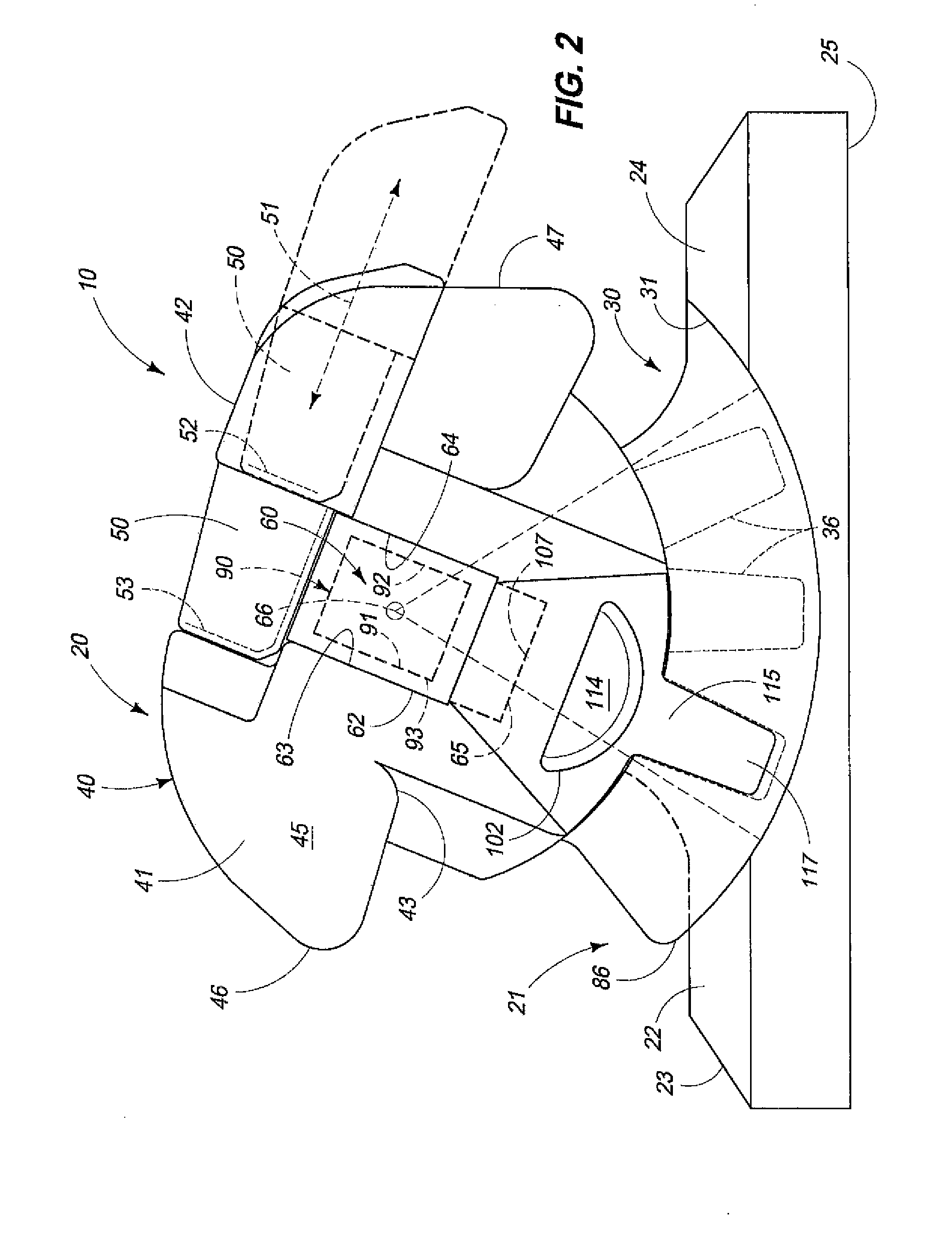Orthodontic Bracket
a bracket and orthodontic technology, applied in the field of orthodontic brackets, can solve the problems of inability to control the resulting treatment force applied in all planes of space, long treatment time for patients, and advanced clinical practice skills, and achieve the effect of reducing the number of patients
- Summary
- Abstract
- Description
- Claims
- Application Information
AI Technical Summary
Benefits of technology
Problems solved by technology
Method used
Image
Examples
Embodiment Construction
[0041]This disclosure of the invention is submitted in furtherance of the constitutional purposes of the U.S. Patent Laws “to promote the progress of science and useful arts” (Article 1, Section 8).
[0042]The present invention, in its various forms, is generally indicated by the numeral 10 in FIG. 1 and following. For purposes of the present application, and for the several forms of the invention as described, hereinafter, it will be understood that the various forms of the invention are employed to be releasably affixed to a patient's tooth 11 as seen in FIG. 1A, and in particular, to the anterior facing surface 12 thereof. The orthodontic bracket 10, in its various forms, and in combination with the arch wire as will be described, hereinafter, is employed to provide a multiplicity of selective torque expressions which individually forcibly act upon the patient's tooth 11. For purposes of this patent application, the term “torque expression” as used hereinafter, is defined as the fo...
PUM
 Login to View More
Login to View More Abstract
Description
Claims
Application Information
 Login to View More
Login to View More - R&D
- Intellectual Property
- Life Sciences
- Materials
- Tech Scout
- Unparalleled Data Quality
- Higher Quality Content
- 60% Fewer Hallucinations
Browse by: Latest US Patents, China's latest patents, Technical Efficacy Thesaurus, Application Domain, Technology Topic, Popular Technical Reports.
© 2025 PatSnap. All rights reserved.Legal|Privacy policy|Modern Slavery Act Transparency Statement|Sitemap|About US| Contact US: help@patsnap.com



